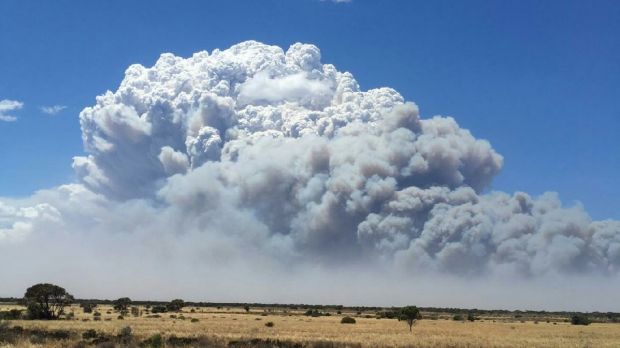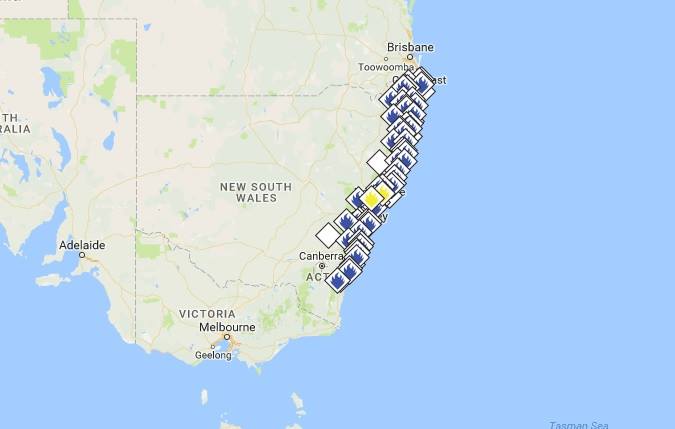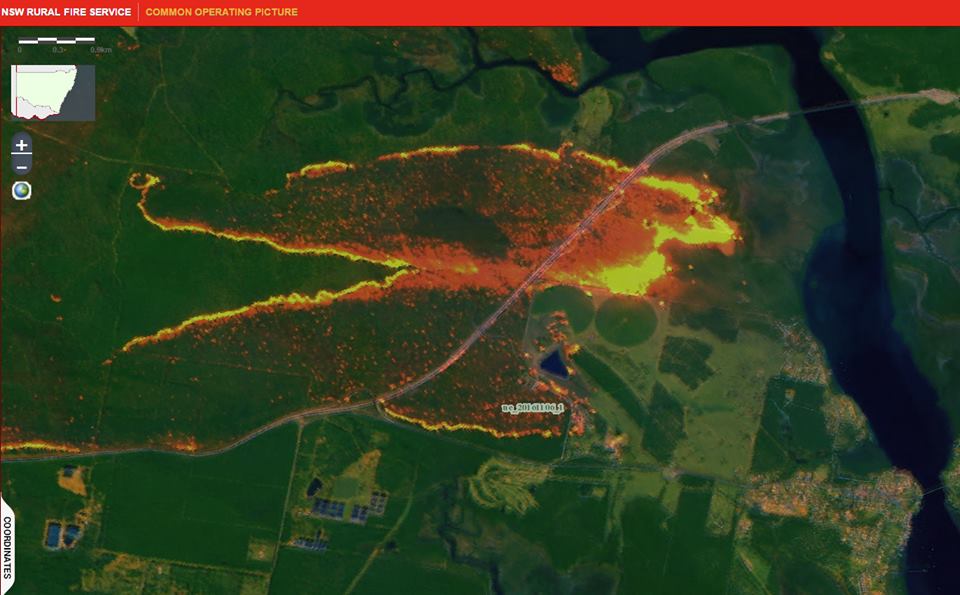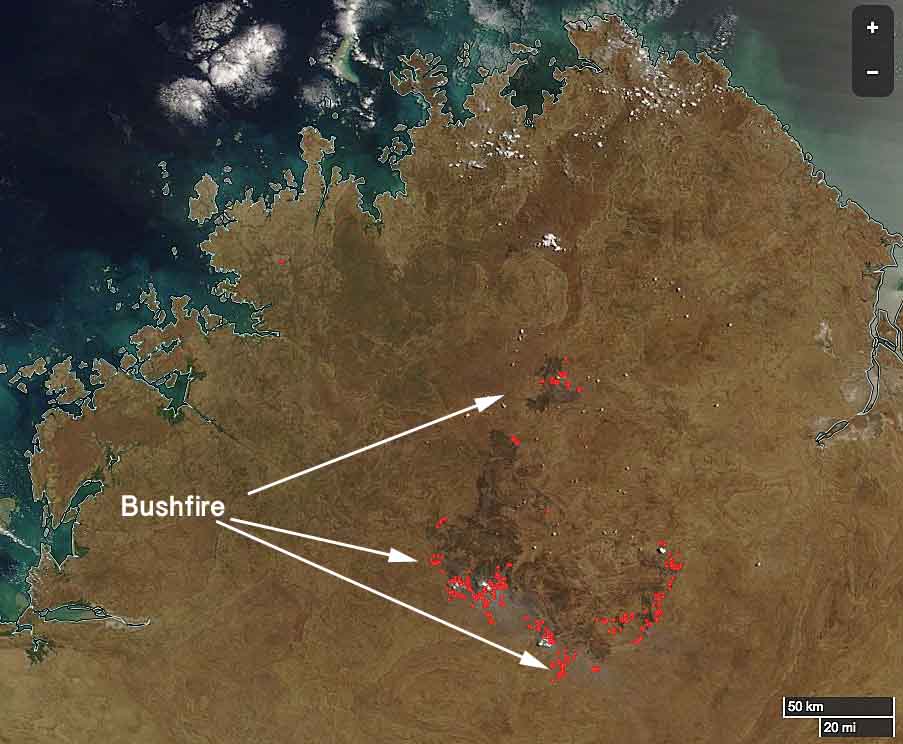Above: Wind in Western Australia produces an interesting trajectory of smoke from a bushfire near Madura. NASA image, December 7, 2016 U.S. time.
A large bushfire in Western Australia forced authorities to close a major highway resulting in hundreds of long-haul truckers and tourists being stuck on the road for hours. Some of them were stranded between roadblocks that were 170 kilometers (105 miles) apart.
Wednesday morning the Eyre Highway across the Nullarbor was closed between Caiguna Roadhouse and Madura. By evening it was open again.
There were two large fires south of the highway that were being pushed by the wind toward the road.
The fire started from lightning four days ago 20 kilometres (12 miles) south of Cocklebiddy.
Below is a time-lapse video of satellite photos of smoke from fires in the area.
Wildfires producing lots of smoke and some pyroconvection in southwestern #Australia – #Himawari Geocolor pic.twitter.com/pErSPZ6BRc
— Dan Lindsey (@DanLindsey77) December 7, 2016







